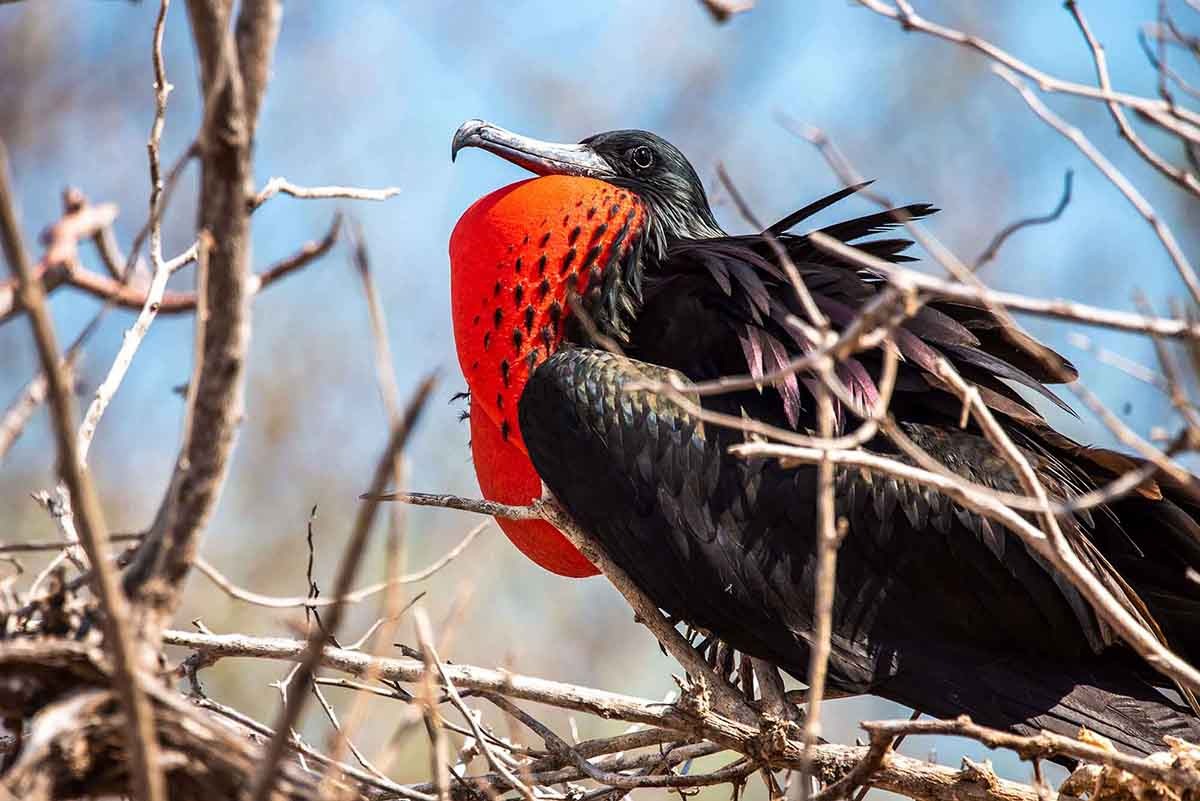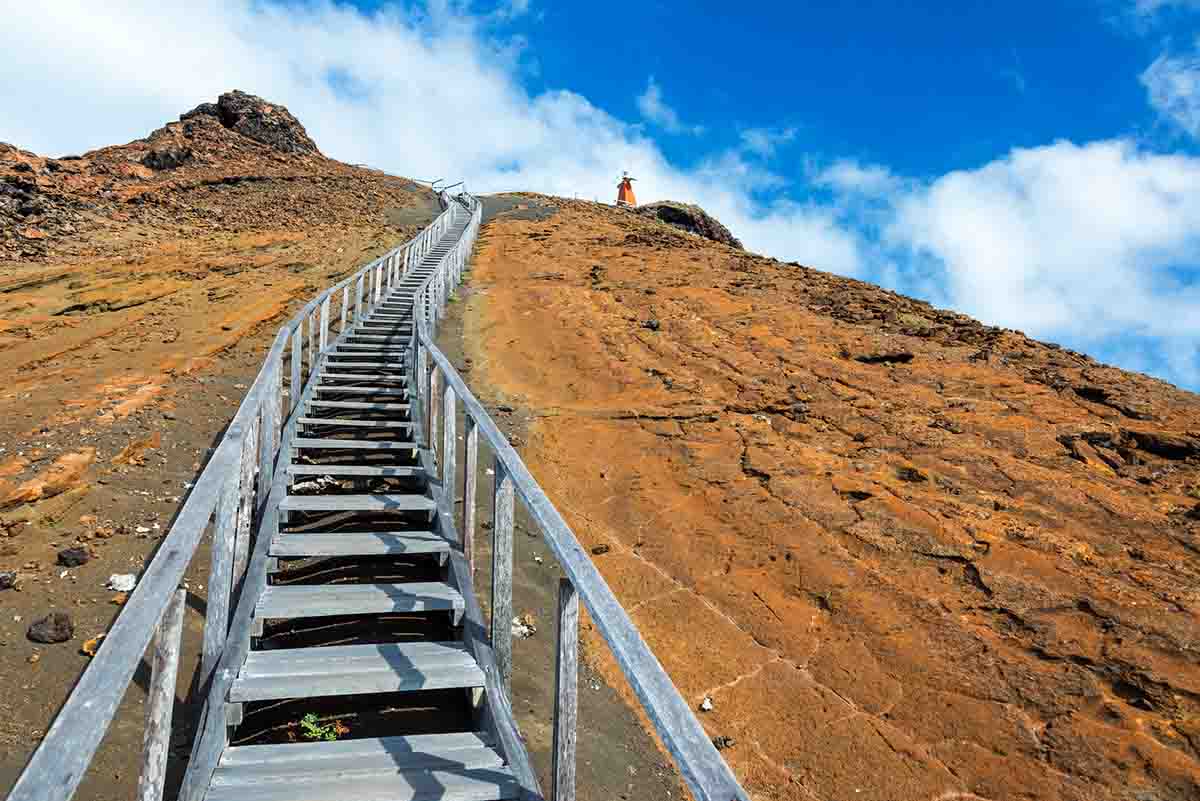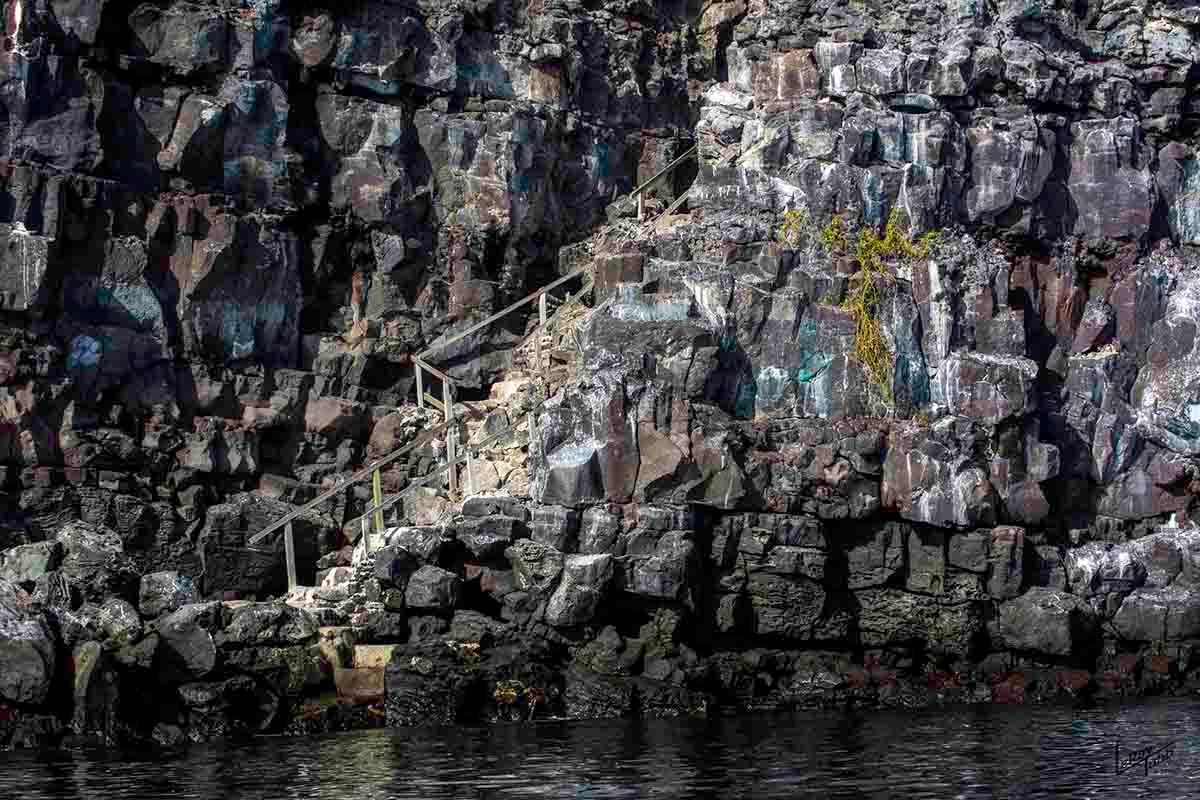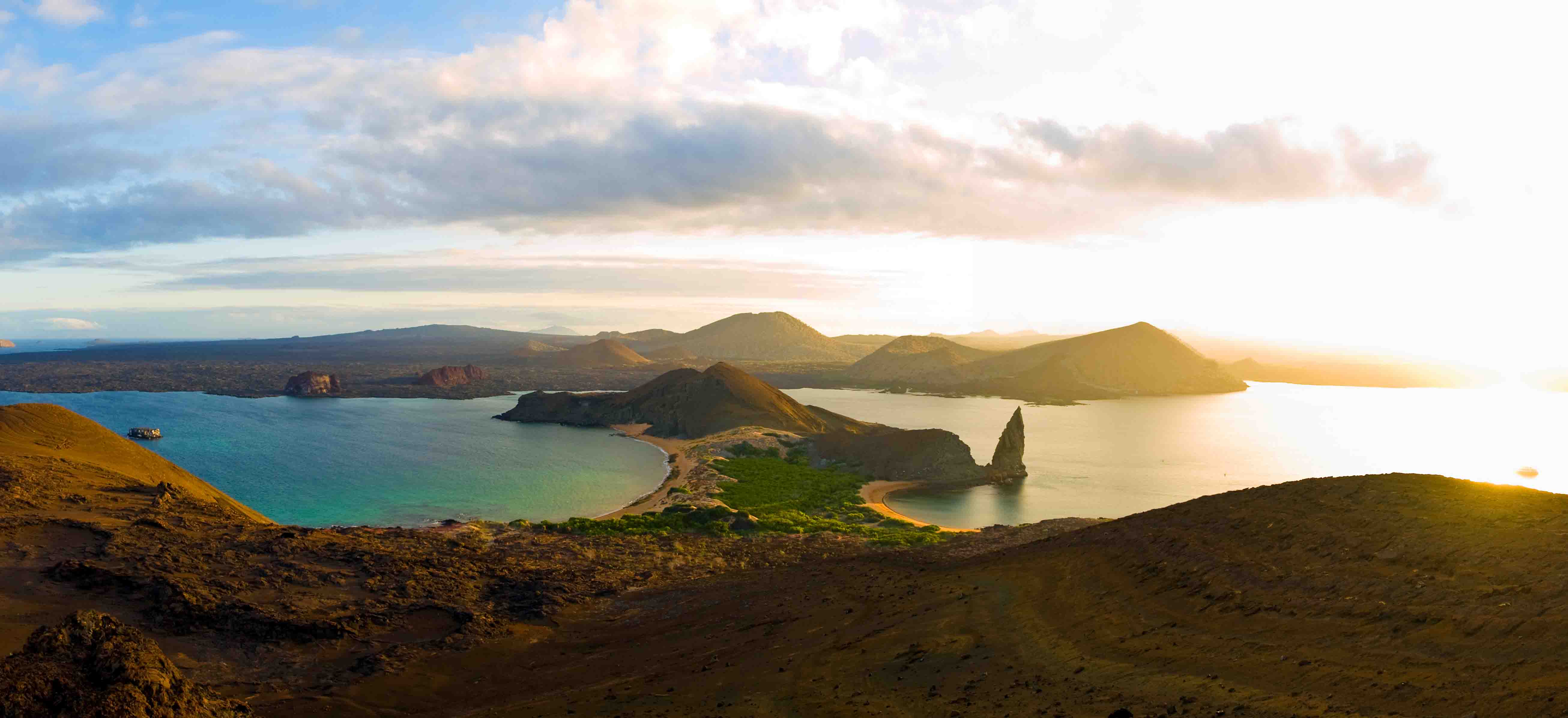Embark on a captivating 5-day, 4-night journey through the Galapagos Islands with Itinerary A, a carefully curated adventure that seamlessly blends exploration, wildlife encounters, and conservation experiences. From the moment of arrival on Santa Cruz, where migration control and park fees are paid, to the enchanting landscapes of Bartolome Island with its volcanic formations and marine life, each day unfolds a new chapter in the archipelago's rich narrative. Explore the contrasting beauty of Islo te Mosquera's white sandy beaches and North Seymour's raised terrain hosting frigatebirds and blue-footed boobies. Genovesa Island unveils unique nesting grounds for Storm Petrels and striking cliff formations, while Plazas and Santa Fe Islands showcase diverse ecosystems, from land iguanas to playful sea lions. The journey culminates on San Cristobal, with a visit to the David Rodriguez Land Tortoise Breeding Centre, offering insight into giant tortoise conservation and promoting sustainable tourism. This itinerary promises an immersive and unforgettable Galapagos experience, celebrating the islands' natural wonders and ongoing preservation efforts.
Enchanted Galapagos Central and Northern Islands Cruise
AM: Journey to the Galapagos
Today marks the beginning of your flight to the Galapagos Islands. As per the regulations set by the Galapagos Government, a migration control card fee of 20 USD is required.
Upon arrival in Santa Cruz, passengers undergo an airport inspection to prevent the introduction of foreign plants or animals to the archipelago. At this inspection point, entrance fees to the Galapagos National Park must be paid, with rates standing at $200 for foreign passengers and $100 for children under 12 years old, effective from September 2024.
Subsequently, your guide will meet you and assist with transferring your luggage to the bus. Passengers will then reach the Catamaran Seaman Journey via a motorized boat known as a Panga.
PM: Exploration of Bartolome Island
Bartolome Island, located across Sullivan Bay, stands at an altitude of 114 meters, providing a vantage point for one of the most picturesque landscapes in the Galapagos Islands. The scenery includes volcanic cones, lunar-like craters, lava fields, and the renowned Toba-formed pinnacle, sculpted by the sea. Despite minimal vegetation, the island boasts two stunning beaches harboring marine turtles, and at the base of the pinnacle, a small colony of Galapagos penguins can be observed.
AM: Mosquera Islet Exploration
Nestled between North Seymour and Baltra, Mosquera Islet stands out as one of the smallest islands in the Galápagos, characterized by its volcanic origin and flat terrain resulting from geological uplift.
The islet's most captivating feature lies in the striking contrast of colors. A pristine beach of white sand is framed by transparent turquoise waters, lush green vegetation, and jet-black lava rocks. The visual spectacle is enhanced during the golden hours of early morning or sunset, making Mosquera an ideal location for landscape photography.
PM: North Seymour Island Adventure
North Seymour Island, a raised island rather than volcanic, boasts a generally flat landscape filled with rocks. The island provides excellent nesting sites for a thriving population of magnificent frigatebirds. Witness the enchanting courtship dance of blue-footed boobies in more open areas, while swallow-tailed gulls gracefully perch on the cliff edges.
Despite the powerful surf along the outer shore, sea lions can be spotted hauling out onto the beach and even indulging in body-surfing activities. The unique blend of wildlife and coastal scenery makes North Seymour a must-visit destination in the Galápagos.
AM: Exploring El Barranco - The Cliff
The enchanting visitor site of El Barranco is situated in the southern part of Darwin Bay on Genovesa Island. The trail, spanning 1.5 km on volcanic rock, offers a fascinating two-hour journey through the youngest geological area of the island.
The cliff, located to the south, is formed of delicate lava prone to natural erosion, creating an ideal nesting ground for Storm Petrels. Witness two species of petrels nesting in the cavities and holes within the lava, while being vigilant for their main predator, the short-eared owl. The red-footed booby, unique to the outer islands like Punta Pitt, Gardner (Floreana), Wolf, Darwin, and Genovesa, finds its nesting grounds here. The masked booby also graces this island. During "panga rides" along the cliffs, observe fur sea lions and various seabird species.
PM: Discovering Darwin Bay
Darwin Bay emerged when the island's crater collapsed below sea level, resulting in a beautiful white coral sandy beach for a wet landing. A haven for birdwatchers, the bay allows for the observation of a plethora of species, including red-footed boobies, masked boobies, wandering tattlers, lava gulls, whimbrels, yellow-crowned and black-crowned lava herons, and yellow warblers.
As visitors progress along the trail, a gradual ascent to the cliff's edge unveils Red-Foots nesting in the Mangrove trees below. Birdwatching enthusiasts will delight in sightings of sharp-beaked finches, large cactus and ground finches, Galapagos doves, and swallow-tailed gulls. The trail concludes at the cliff's edge, offering an awe-inspiring panoramic view of the island and the diverse birdlife inhabiting its vibrant ecosystem.
AM: Exploration of South Plazas Island
Situated to the east of Santa Cruz Island, South Plazas forms part of the Islas Plazas and, despite its modest size, hosts some of the most captivating and unique species in the Galapagos. Notably, the Plazas land iguanas found here are smaller than their counterparts on other islands.
The island features several hybrid iguanas resulting from the crossbreeding of a male marine iguana and a female land iguana. Distinguished by their black/gray coloration, these hybrids sport the crest of a land iguana along with the face and tail of a marine iguana. The abundant population of iguanas can be attributed to the presence of their favorite food, tunas. Along the rugged cliffs, observe swallow-tailed gulls nesting alongside seabirds such as Audubon shearwaters, red-billed tropicbirds, frigate birds, and brown pelicans.
PM: Santa Fe Island Discovery
Nestled in the southeastern part of the Galapagos, Santa Fe Island boasts a unique flat terrain resulting from uplift rather than volcanic origins. Some theories propose it to be the oldest island in the Archipelago. The island is a haven for endemic species, including the Galapagos hawk, Galapagos snake, Galapagos mockingbird, rice rats, and one of the two species of land iguanas in the islands.
Upon disembarking in the clear waters, encounter one of the numerous sea lion colonies. The trail introduces salt bushes and towering giant prickly pear cacti, showcasing gigantism, a characteristic of oceanic islands. Santa Fe provides excellent opportunities for snorkeling with playful sea lions and vibrant tropical fish in its pristine waters.
AM: Visit to the David Rodriguez Land Tortoise Breeding Centre
Established in 2002 under the name Jacinto Gordillo, the Tortoise Breeding Centre was initiated by the Galapagos National Park Service for the captive breeding and care of tortoises. In 2016, it was renamed the David Rodriguez Tortoise Breeding Centre in honor of David Rodriguez's 39 years of dedicated service as a park ranger.
Situated in the southeast of San Cristobal, approximately 22.5 km from Puerto Baquerizo Moreno, this breeding center is accessible by land. The 40-minute bus journey leads to the vicinity of Cerro Colorado. The primary goal of the David Rodriguez Tortoise Breeding Centre is to enhance the population status of the giant tortoises, specifically Chelonoides chathamensis of San Cristóbal Island. The facility aims to provide an environment closely resembling their natural habitat, thereby contributing to the conservation efforts and promoting the sustainable tourism development of San Cristóbal.
Following your visit, you will be transported to San Cristobal airport to ensure you catch your flight back to the mainland punctually.




Included
- All programed visits as per itinerary with specialized naturalist bilingual guide
- Accommodation in twin/double cabin with private facilities (surcharge for suite)
- All meals on board, drinking purified water, coffee and tea
- Snorkeling equipment (fins, mask & snorkel) & sea-kayaks
- Transfers within the islands on cruise dates as per itinerary
- Personalized 24/7 assistance during tour
Not Included
- Airfare to/from Galapagos from/to Mainland Ecuador (to be added)
- Galapagos National Park Entrance Fee US$100 per person (in cash only upon arrival)
- Galapagos Migration Card US$20 in cash per person (at Mainland’s Airport)
- Alcoholic/soft drinks, personal expenses, extras, and tips
- All sizes wet-suits for rent on board (in cash)
- Travel, medical & cancelation Insurance and any services on Mainland
- Other services not specified in the program
Highlights
- Breeding and care of giant tortoises in captivity, promoting conservation and tourism.
- Birdwatching with various species, including red-footed boobies, masked boobies, and more.
- Stunning landscapes, volcanic cones, lava fields, and Galapagos penguins.